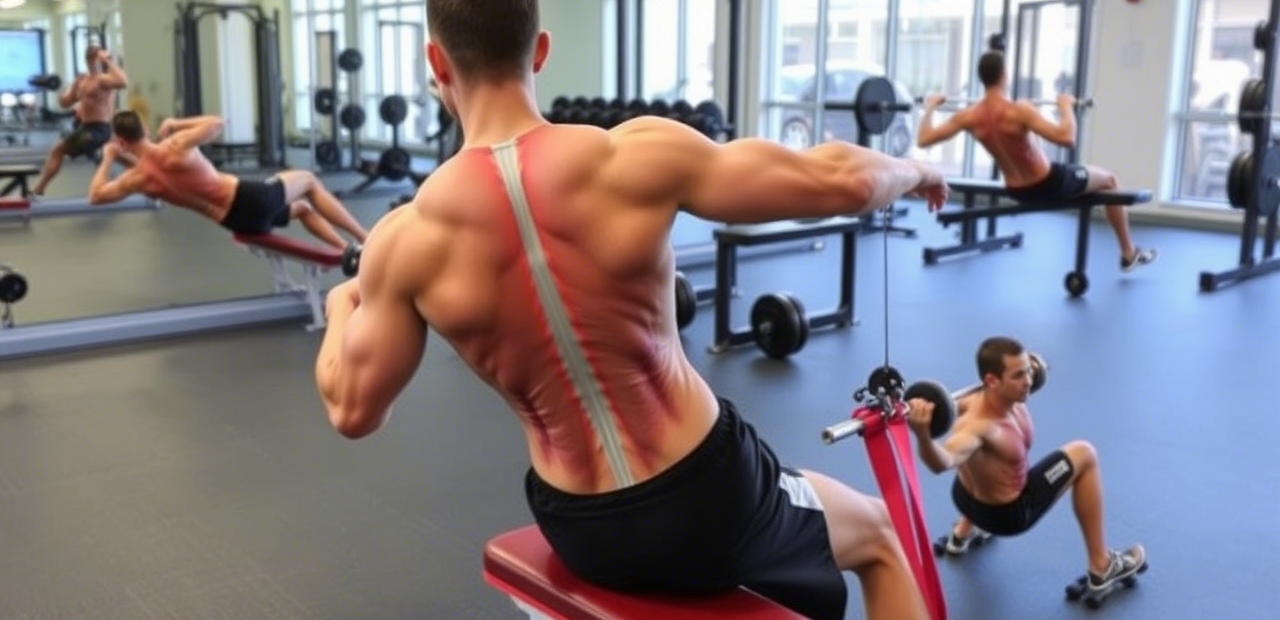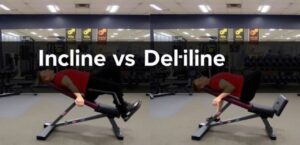Your back is more than just a canvas for muscle definition—it’s a powerhouse of posture, strength, and support. At the heart of it all lies the erector spinae, a group of deep muscles running along your spine that play a crucial role in everything from sitting upright to crushing deadlifts. Whether you’re looking to enhance your athletic performance, correct poor posture, or simply build a resilient and strong back, training these muscles is non-negotiable. Let’s dive into the top exercises that will fire up your erector spinae and keep your spine standing tall and proud.
1. Barbell Deadlift – The King of Back Builders
When it comes to building posterior chain strength, the barbell deadlift is royalty. It targets the entire back, with a particular emphasis on the erector spinae.
Why It Works
- Engages multiple muscle groups including lower back, glutes, and hamstrings
- Trains the erector spinae through isometric contraction and spinal stabilization
- Teaches proper hip hinge mechanics
- Builds raw strength and total-body power
- Enhances posture and structural alignment
- Encourages strong grip and forearm development
- Helps correct muscular imbalances
- Ideal for both beginners and advanced lifters
- Boosts metabolism due to compound movement dynamics
- Transfers well to real-life lifting and athletic tasks
- Promotes hormonal response for muscle growth
- Improves coordination and control under heavy load
- Reinforces spinal rigidity for sports and movement
- Easily scalable with weight progression
- Can be done with various grip styles for variation
- Builds confidence with heavy lifting
- Improves core strength and bracing techniques
- Excellent test of overall body mechanics
- Great for time-efficient, full-body workouts
- A staple in nearly every strength training program
2. Romanian Deadlifts (RDLs) – Stretch, Strengthen, and Sculpt
The RDL is a hamstring and lower back specialist, hitting the erector spinae with laser focus through controlled movement and deep tension.
Why It Works
- Encourages eccentric loading of the erector spinae
- Focuses on time under tension for muscle development
- Strengthens posterior chain with spinal alignment
- Improves hip mobility and hamstring flexibility
- Enhances lower back endurance
- Builds control in the hinge pattern
- Can be performed with dumbbells or barbells
- Easier on the knees than traditional deadlifts
- Develops body awareness and proprioception
- Ideal for hypertrophy training of back muscles
- Less taxing than max-effort deadlifts
- Helps maintain neutral spine under load
- Reduces risk of lower back injury when done correctly
- Excellent for slow, controlled reps
- Improves range of motion and joint health
- Great accessory lift for athletes
- Increases resistance to lumbar fatigue
- Allows high volume with lower injury risk
- Supports rehabilitation when returning to lifting
- Builds a mind-muscle connection with spinal muscles
3. Back Extensions – Classic, Clean, and Effective
Simple yet powerful, back extensions directly target the erector spinae with bodyweight or added resistance.
Why It Works
- Isolates the erector spinae with precision
- Teaches hip hinging in a safe, supported way
- Builds foundational strength in the lower back
- Reduces lower back discomfort from sedentary lifestyle
- Easy to learn and implement
- Can be modified for difficulty (e.g., weighted, banded)
- Improves posture and spinal support
- Strengthens glutes and hamstrings as synergists
- Enhances spinal proprioception and coordination
- Helps correct anterior pelvic tilt
- Ideal for beginners in back training
- Boosts endurance for prolonged sitting or standing
- A great warm-up or accessory exercise
- Increases muscular activation in the lumbar region
- Helps with recovery and blood flow
- Promotes controlled spinal extension
- Can be done on Roman chair or stability ball
- Encourages full range of motion in safe parameters
- Builds resilience against back strain
- Reinforces proper breathing and bracing techniques
4. Good Mornings – Underrated But Unmatched
This powerful lift is often overlooked but delivers incredible benefits for spinal erectors and posterior chain strength.
Why It Works
- Trains the back and hamstrings simultaneously
- Activates the erector spinae through dynamic loading
- Forces proper spinal alignment and tension
- Builds core engagement and hip drive
- Great for strengthening posture under load
- Encourages mental focus due to form demands
- Increases flexibility in posterior chain
- Can be performed with barbells or resistance bands
- Works well as a mobility and strength hybrid
- Teaches discipline in movement patterns
- Improves squat and deadlift performance
- Reduces risk of spinal flexion under weight
- Builds athletic explosiveness
- Perfect for controlled reps and progressive overload
- Enhances endurance in stabilizing muscles
- Easily modifiable for different fitness levels
- Strengthens underused muscles in the lower back
- Boosts lower body power transfer
- Can be used for injury prevention training
- Offers unique loading angle to target spinal erectors
5. Trap Bar Deadlifts – Safer and Solid
This variation of the deadlift allows for a more upright torso and can be easier on the lower back while still hammering the erector spinae.
Why It Works
- Minimizes spinal shear by keeping load centered
- Promotes spinal neutrality throughout the lift
- Engages erector spinae with less risk of rounding
- Friendly for those with mobility issues
- Great for athletes who need quick recovery
- Easy to learn for beginners
- Encourages explosive drive from the floor
- Trains grip and core simultaneously
- Reduces stress on shoulders and hips
- Effective for building total-body coordination
- Less intimidating than barbell variations
- Scalable with both heavy and light weights
- Perfect for functional strength training
- Transfers to real-life lifting mechanics
- Helps build foundational pulling strength
- Good option for rehab-focused training
- Supports natural movement patterns
- Great alternative to traditional deadlifts
- Encourages consistent spinal engagement
- Can be incorporated into circuits or conditioning
6. Bird Dogs – Small Movement, Big Gains
A bodyweight staple that hones core stability and directly targets the erector spinae in a subtle but powerful way.
Why It Works
- Improves spinal stability and endurance
- Strengthens deep core muscles
- Promotes contralateral coordination
- Safe for all fitness levels and ages
- Enhances posture and movement efficiency
- Reinforces lumbar control and balance
- Encourages long-term spine health
- Excellent for beginners or recovery days
- Can be progressed with bands or pauses
- Focuses on quality over quantity
- Helps relieve back tension
- Builds a strong base for heavier lifting
- Great warm-up or cool-down exercise
- Reinforces control in everyday movement
- Ideal for injury prevention programs
- Combines strength and mobility in one
- Teaches mindful movement and breath control
- Enhances mind-body connection
- Reduces risk of lower back pain
- Boosts athletic performance through core control
7. Supermans – Bodyweight Powerhouse
The Superman exercise is simple, yet incredibly effective for activating the entire spinal erector chain and improving back strength.
Why It Works
- Activates entire posterior chain
- No equipment needed—do it anywhere
- Strengthens spinal stabilizers
- Improves posture and reduces forward slouch
- Can be performed daily for mobility
- Builds muscular endurance in the lower back
- Fun and kid-friendly too
- Enhances awareness of back extension mechanics
- Supports rehab and corrective work
- Easy to integrate into warm-up routines
- Engages glutes, shoulders, and back simultaneously
- Ideal for bodyweight-focused programs
- Encourages full-body tension
- Helps offset effects of prolonged sitting
- Builds symmetry in back musculature
- Great for low-impact training days
- Improves spinal alignment over time
- Teaches proper breathing with movement
- Boosts energy and circulation
- Lays foundation for more complex exercises
8. Kettlebell Swings – Explosive and Efficient
Not just a cardio tool—kettlebell swings light up the erector spinae and build dynamic back strength.
Why It Works
- Develops explosive hip drive
- Targets the spinal erectors with rhythmic power
- Trains endurance and strength simultaneously
- Elevates heart rate for metabolic conditioning
- Reinforces hip hinge mechanics
- Builds glute and hamstring power
- Improves athletic explosiveness
- Supports lumbar spine through bracing
- Perfect for high-rep training
- Encourages spinal alignment under speed
- Enhances grip strength and forearm endurance
- Great for short, intense workouts
- Combines cardio and strength into one movement
- Burns fat while building muscle
- Easy to scale with heavier bells
- Builds core stability under dynamic load
- Improves posture with repetition
- Engages the entire posterior chain
- Offers a unique stimulus for back muscles
- Great for total-body functional training
Conclusion
Your erector spinae deserves attention—it works tirelessly to keep you upright, strong, and moving powerfully. By incorporating these exercises into your training routine, you’ll not only build a better-looking back but also create a foundation of strength and stability that supports everything you do. So whether you’re hoisting a barbell or simply standing tall at your desk, let these exercises fuel your progress. Embrace the grind, feel the burn, and keep your spine strong—you’ve

Emily Rose Johnson is a passionate writer with a knack for crafting engaging content. She specializes in communication strategies, digital marketing, and creative storytelling.









